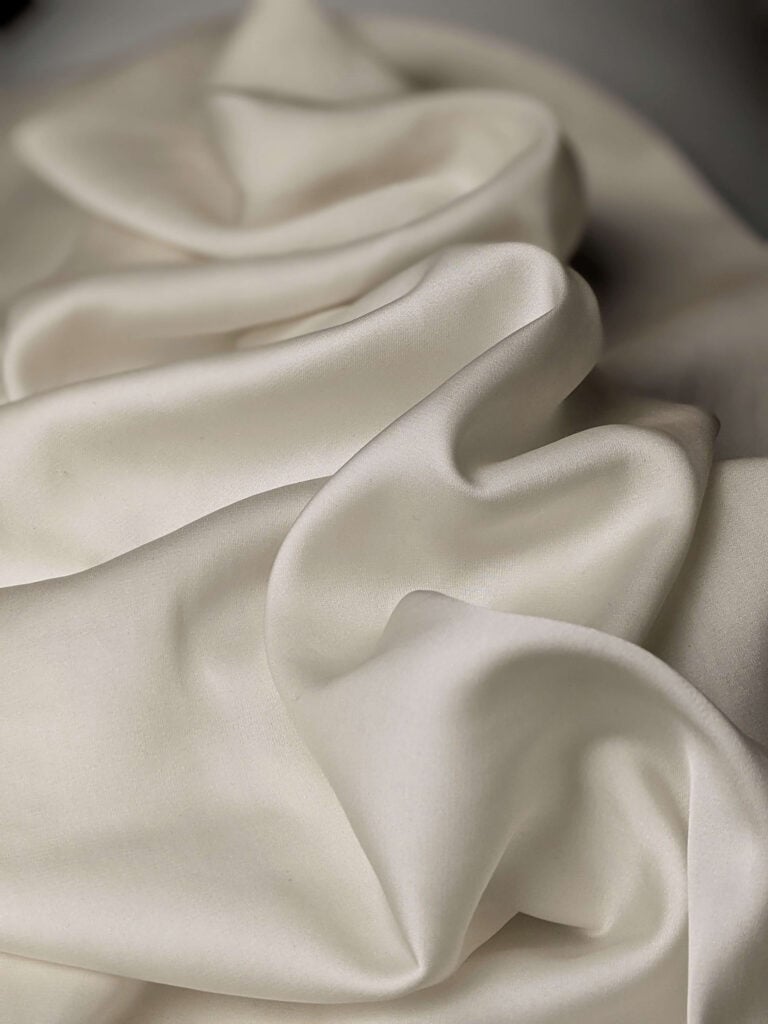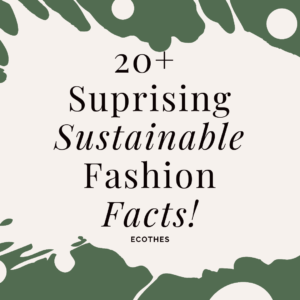
Cupro, commonly known as Bemberg™, has gained popularity in recent years as a vegan alternative to silk, and a sustainable way to recycle waste cotton and cotton products.
However, there are different stages involved in the production of cupro, which can make this fabric unsustainable and unethical. In this article, we’ll look at what the material is, how it’s made, it’s sustainability, and more..
What is cupro?
Cupro is short for Cuprammonium rayon. It’s a soft and silky fabric produced from waste cotton fibers which surround the cotton seed, known as linter, which would otherwise be discarded. Cupro is also produced from recycled cotton and other natural cellulose-fibers.
How is cupro made?
Cotton and other natural fabrics are composed of cellulose, an organic compound.
Ammonium and copper react with cellulose to produce a cuproammonium compound. This substance is then put into caustic soda and forced through a device known as a spinneret to produce strings.
These strings are then treated further to regenerate the cellulose by placing them in hardening baths to wash away and remove the copper and ammonium.
What remains is a fiber that can be spun into silky, easily draping material that resembles silk.
Where is cupro made?
China is the biggest producer of cupro fabric.
Is cupro a natural fibre?
Although produced from cotton fibers, Cupro is not considered a natural material. Instead, it is a semi-synthetic man-made fiber.
Is cupro production sustainable?
Environmental impact
Pros:
- Recycling cotton and waste cotton means less waste to landfill. Because conventional cotton production methods are environmentally unsustainable – causing pollution, water contamination and soil erosion – it is better to utilise as much as possible and reduce waste.
- Some factories producing cupro are powering their sites using up top 40% renewable energy.
Cons:
- Cupro can only be made by using copper, ammonium, and caustic soda. If not disposed of correctly, these chemicals can cause severe damage to the environment.
It is possible to recycle copper ammonium and caustic soda, use them again, and head towards a closed loop, circular production system. However, chemicals must eventually be dumped and replaced.
If chemicals are released unregulated and without proper treatment into the environment they can cause damage to the local environments, so producing Cupro can pose environmental risks.
Is Cupro biodegradeable?
Yes, Cupro is considered biodegradable under suitable conditions. As shown below, under warm conditions (temperature 35°C, humidity 80%), the fiber is decomposed by microorganisms.

Ethical impact of cupro
Cupro isn’t necessarily ethical. Some factories producing cupro may be unregulated and not adhere to health and safety standards for workers.
Additionally, chemicals involved in the cupro production process can be harmful to workers’ health: studies show workers in viscose rayon factories at increased risk of stroke, heart disease, nerve damage, and Parkinsons disease due to poisoning. In addition, the caustic soda used can cause severe burns, and blindness if not handled safely.
Therefore, it is important to research before you buy cupro fabrics. Check the transparency of supply chains to ensure it has been produced in ethical and regulated conditions. If a brand can’t prove that it’s supply chain meets ethical standards, there’s no guarantee that the cupro used is from an ethical source.
Is Cupro vegan?
Yes, cupro fabric is considered vegan, and is a popular alternative to silk (which is not vegan).
Wrapping Up
| Pros | Cons |
|---|---|
| Recycling of waste cotton and cotton products, prevents landfil. | Cotton production is environmentally damaging in the first place. |
| Vegan alternative to Silk | Uses harmful chemicals in production, if not disposed of correctly can cause environmental harm |
| Biodegradable fabric | Possible health risks associated for workers |
If you are looking for a sustainable fabric, cupro definitely has pro’s however it also has many environmental cons.
It is therefore important to check that your clothing has been made in a safe, ethical and sustainable way. You can often do this by looking at clothing brands supply chain transparency and sustainability.
There are many other sustainable fabrics out there, like Tencel for example. You can check out our introduction guide on Tencel here.



